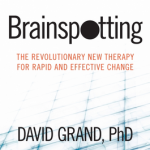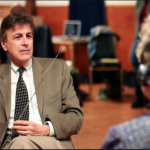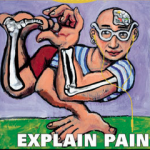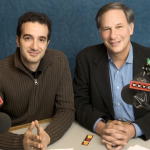By Jennifer Delaney, MA, NCC
The other day a friend was battling a migraine. She had been in the midst of some serious negotiations at work, and remarked, “It’s all coming to a head.”
“To your head?” I reflected.
She laughed. “Evidently!”
It is clear to many clinicians that bodies take the brunt of our inability to process stress and underlying emotions, especially anger and anxiety. Instead of numbing feelings with some substance, pill or comfort food, it’s always more beneficial to learn new ways to acknowledge and release emotions so that we don’t contract an array of physical ailments that cause chronic pain as well as addictions.
According to the Psychology Today website, “Some 30 million Americans suffer from some form of chronic pain.” New paradigms of pain, such as neuromatrix, nerve sensitivity, endocrine and immune responses to pain, neuroplasticity, as well as cognitive and emotional influences are all part of the recent academic conversation exploring this complex phenomenon.
Purpose of This Post
The purpose of this relatively meaty post is to introduce you to some of the leading medical thinkers/practitioners in the field who, time and again, discover that the source of unexplained pain lies in the relationship between primordial brain and experience (associative perception of pain), as well as brain and emotions (specifically, repression of emotions).
 In the book Brainspotting, Dr. David Grand says, “In a significant number of situations, Brainspotting has successfully reduced, and at times eliminated, undiagnosable or intractable symptoms, including pain and fatigue.” He offers the example of a client whose “trauma–based emotional and physical pain were inexorably intertwined in her nervous system,” and goes on to explain: “Both manifestations need to be treated simultaneously if she was to be free of her body pain and emotional panic.”
In the book Brainspotting, Dr. David Grand says, “In a significant number of situations, Brainspotting has successfully reduced, and at times eliminated, undiagnosable or intractable symptoms, including pain and fatigue.” He offers the example of a client whose “trauma–based emotional and physical pain were inexorably intertwined in her nervous system,” and goes on to explain: “Both manifestations need to be treated simultaneously if she was to be free of her body pain and emotional panic.”
Sometimes a counseling client’s initial goal is not to relieve chronic pain; however, the therapeutic subcortical work that they engage in creates a happy byproduct of reduction or elimination of pain. Dr. Grand offers this case: Randi’s “lingering pain was finally released…in the form of rage and grief over what she had been through, emotionally and physically, and what she had lost in her childhood of suffering. By the end, Randy was pain free, except for the usual aches and pains we all go through.”
Meeting Dr. John E. Sarno
My quest to understand the relationship between pain and the brain began in the 1980s when my husband at the time struggled with back pain so severe that he tried everything – medical and alternative – and was regularly wearing a brace, on the brink of undergoing surgery. He was 25 years old when he discovered the work of Dr. John E. Sarno, now a retired orthopedic surgeon who conducted a thriving split practice at New York City Medical Center for many years. The majority of Dr.  Sarno’s practice was devoted to clients seeking traditional Western treatment for back pain, tendonitis and rheumatoid arthritis. The rest of his clients were willing to consider that while their pain was very real, the source of the pain was rooted in repression of emotion, in a physical process Dr. Sarno calls TMS or Tension Myositis Syndrome. Later, in his book The Divided Mind: The Epidemic of Mindbody Disorders, he applied his theory to a long list of other maladies as well, including (to list a few): gastrointestinal disorders, TMJ, fibromyalgia, tinnitus, hay fever, eczema and chronic fatigue syndrome.
Sarno’s practice was devoted to clients seeking traditional Western treatment for back pain, tendonitis and rheumatoid arthritis. The rest of his clients were willing to consider that while their pain was very real, the source of the pain was rooted in repression of emotion, in a physical process Dr. Sarno calls TMS or Tension Myositis Syndrome. Later, in his book The Divided Mind: The Epidemic of Mindbody Disorders, he applied his theory to a long list of other maladies as well, including (to list a few): gastrointestinal disorders, TMJ, fibromyalgia, tinnitus, hay fever, eczema and chronic fatigue syndrome.
Pain is Authentic
Dr. Mel Pohl, who currently treats patients at the Las Vegas Recovery Center, says that “emotions drive the experience of pain,” and he emphasizes that clinicians who minimize the experience of unexplained chronic pain by implying it is not real “do a disservice to patients and their families by discounting the validity of the pain.” Pain is authentic, and clients benefit by understanding the origin and biological nature of pain.
I accompanied my husband to the free public lectures that Dr. Sarno offered in New York City, and, since then, I benefited when I experienced Bells Palsy, knee pain and, a couple of times in my life, debilitating back spasms – 10 out of 10 on the Subjective Units of Distress Scale (SUDS). I knew that these conditions were signals for me to look within and address unconscious emotions that I had been sweeping under the rug. When I took the necessary steps to draw better boundaries or to resolve deep-seated issues and release the associated emotions, I recovered immediately without muscle relaxants or painkillers.
The Dread of Conflict
Individuals with chronic pain are encouraged to write in a journal – to carry on a dialogue with their pain and emotions – and, if necessary, consult with a mental health professional who could help to navigate through the emotional mire. Most individuals who are not skilled at communication don’t realize how vehemently they dread conflict. Conflict gathers negative association perceived by the brain as a threat to survival. So, instead of drawing good boundaries or confronting an issue directly, it becomes so much easier for a person to feel physical pain than emotional pain, to say he is dealing with crippling back spasms, a migraine or knee pain.
While Dr. Sarno was a pioneer highlighting emotions as a contributing source of pain, he wasn’t quite on target as to how the experience of pain gets created by the brain. He proposed that a reduction in blood flow to a small region or a specific body structure, such as a spinal nerve, resulted in a state of mild oxygen deprivation that resulted in pain, and that muscle tissue, nerves and tendons may be targeted by the brain. But Adriaaan Louw, PT, PhD, CSMT, co-author of Explain Pain, clarifies the likely candidate for pain: it is the brain, but not in the way Dr. Sarno theorized. Instead, Louw explains that tissue injury or inflammation and pain are not the same – that pain is a result of the brain no matter what is occurring in the body.
The Source of Pain
Dr. Lorimer Moseley, Professor of Clinical Neurosciences and Chair in Physiotherapy at the University of South Australia offers an insightful and entertaining 2011 TedTalk about the neurobioloby of pain. He echoes Dr. Sarno saying, “If you believe your back is breakable or prone to slipped discs, that increases excitability of brain cells that create pain. Any credible evidence from medical clinicians, including just a look, or negative phrases, will feed into this belief.”
Similarly, Dr. Pohl, explains it like this: “It’s important to be aware of the story you are telling yourself about the pain. Maybe you are sitting around with a 7 out of 10 [SUDS] and it feels pretty manageable. You might say, ‘I’m going to go out and take a walk,’ but then you worry: ‘If I take a walk it might get worse; I won’t take a chance. I’m just going to sit here.’ Well then, your life is diminished.” In his clinical finding, he estimates that resentment and anger about the pain, or fear anticipating it getting worse, can escalate the pain by 20-30%.
The Brain Creates Associations
Which brings me to the second part of the equation: the associative perception of pain.
 In Brainspotting, Dr. Grand states, “A pain in the knee is actually an illusion, as it is, in truth, a pain from the knee, but felt in the brain.” Affirming this, Dr. Moseley says, “Pain depends entirely on what the brain thinks is happening, depending on how the brain is evaluating what is happening. Pain does not reflect the actual issue – it is not an accurate indication of the state of the body.”
In Brainspotting, Dr. Grand states, “A pain in the knee is actually an illusion, as it is, in truth, a pain from the knee, but felt in the brain.” Affirming this, Dr. Moseley says, “Pain depends entirely on what the brain thinks is happening, depending on how the brain is evaluating what is happening. Pain does not reflect the actual issue – it is not an accurate indication of the state of the body.”
Dr. Moseley acts out a scene: he was walking in the Australian bush when he felt something scrape his leg. He hopped slightly, and with lightening speed his body told his brain what had occurred, and his brain concluded that based on the last ten times the body had felt that sensation, it had been a twig. Continuing without so much as looking down, it quickly became evident that he had been bitten by a deadly snake. Fortunately, Dr. Moseley survived to tell the tale. However, the next time he was hiking in the bush and felt a scrape on his leg, the lightening flash electrical and chemical communication systems of the body that ultimately lead to the amygdala yelled: REMEMBER THE LAST TIME THIS HAPPENED? The association to a scrape on his left leg had changed. He screamed and leapt into the air, and he felt an actual sharp stab of pain. Upon observation, he saw that it was in fact… a twig.
The brain had developed an association based on past experience, and it perceived the scrape as a serious threat. We are wired to survive. Pain is a signal to protect, even if it isn’t always accurate.
Retraining the Brain
Dr. Moseley explains that with associations “sensitivity is increased, and precision [or distinguishing what actually is a threat] is decreased. We can retrain the brain to regain precision. Things wouldn’t hurt if your brain didn’t think you were in danger.” To show us how powerful the brain can be, Dr. Moseley goes on to relay “if someone who has had back pain for 25 years watches someone else bending over and picking up a box, it causes the back of the observing person prone to back pain to hurt too.”
Dr. David Butler, the other co-author of Explain Pain, advocates for educating clients about the causes and biology  of pain, which can be a big step towards helping them find relief. He says, “Education about the biology of pain will reduce pain’s threat value and improve its management.” At the recent Brainspotting master class, Dr. Grand advocated psycho-education about the brain so that our clients’ brains can “get to work” using the information that practitioners provide in the name of healing.
of pain, which can be a big step towards helping them find relief. He says, “Education about the biology of pain will reduce pain’s threat value and improve its management.” At the recent Brainspotting master class, Dr. Grand advocated psycho-education about the brain so that our clients’ brains can “get to work” using the information that practitioners provide in the name of healing.
Placebo Effect: To Whom Do You Give Power?
Interestingly, Dr. Sarno believed that clients should learn about the placebo effect – that most methods of treatment offer placebo relief at best and pain issues will return in a different place in the body or a different malady if the emotional source is not resolved. So a doctor, physical therapist, acupuncturist, massage therapist, etc. may proclaim a result, and if the patient gives what he or she says enough credence, then it will likely come true – for temporary relief and an unnecessary financial cost. If the source is emotional and you are treating the physical, it’s only addressing one aspect of the pain.
Subcortical Safe Vault
This reminds me of Dr. Grand’s assertion that we cannot relieve subcortical issues via the neocortex. Brainspotting is so effective because often the source and memory of trauma being held by and in the body is preverbal and requires a subcortical intervention.
 Finally, demonstrating just how subconscious the pain process is, Jad Abumrad and Robert Krulwich, hosts of RadioLab on NPR, told this tale exploring memory and pain. To paraphrase: a woman with dementia went to see her doctor. The doctor hid a thumbtack in his palm so that when she shook his hand, her hand was pricked and she recoiled. The next time she returned, as usual, she did not remember him, but when he reached his hand out to shake hers, she hesitated. The question was posed: “If she had no memory, how could she remember the threat?”
Finally, demonstrating just how subconscious the pain process is, Jad Abumrad and Robert Krulwich, hosts of RadioLab on NPR, told this tale exploring memory and pain. To paraphrase: a woman with dementia went to see her doctor. The doctor hid a thumbtack in his palm so that when she shook his hand, her hand was pricked and she recoiled. The next time she returned, as usual, she did not remember him, but when he reached his hand out to shake hers, she hesitated. The question was posed: “If she had no memory, how could she remember the threat?”
The answer to the question is that whenever you create an associative memory, chemical and electrical activities are at work to connect one brain cell to another.
The show also included Dr. Oliver Sacks who summed it up eloquently, “Memories of pain and joy are primordial…I like the idea of a subcortical safe vault.” Abumrad and Krulwich add: “Deep down in the oldest parts of our brains there may be a place for the memories that matter most.
The advantage as Brainspotting practitioners is that we do not need to know the source of our clients’ pain, because their brains and emotional bodies are aware of the source, as well as how to repair the threat and its manifestations. All we are required to do is to provide the psycho-education: that pain is not what it seems, and the brain is a creative healer; change is possible. Then, follow the lead of the client.
All we are required to do is to provide the psycho-education: that pain is not what it seems, and the brain is a creative healer; change is possible. Then, follow the lead of the client.
All of the aforementioned pioneers and masters in their fields contribute to a deeper understanding of emotional and physical pain. I am indebted to Dr. Sarno who launched me on this journey and whose perspective freed dozens of my friends and family from the mire and shackles of chronic pain. I offer equal gratitude to Dr. Grand for creating and teaching Brainspotting, a profound tool for healing. As mental health practitioners, we help people step from a prison of their own making by showing them the possibilities of their physiology, brains and the wonders of neuroplasticity.
Jen Delaney, MA, NCC is a Somatic Specialist and Registered Psychotherapist and a member of RMBI’s Board of Directors. Learn more about Jen’s work at her web site.
